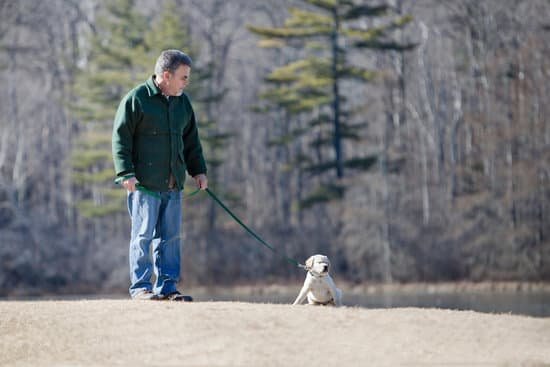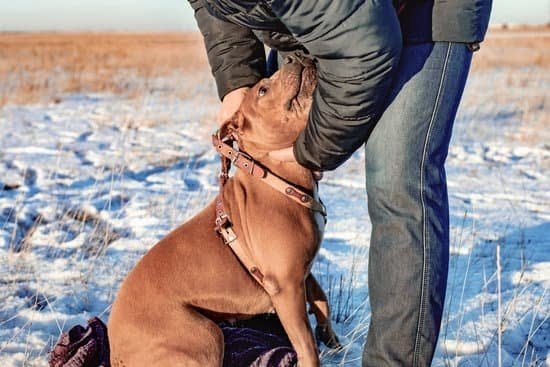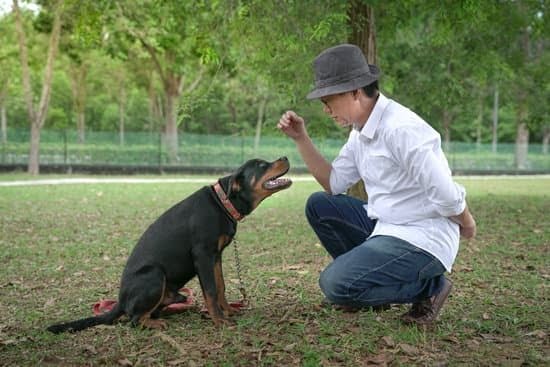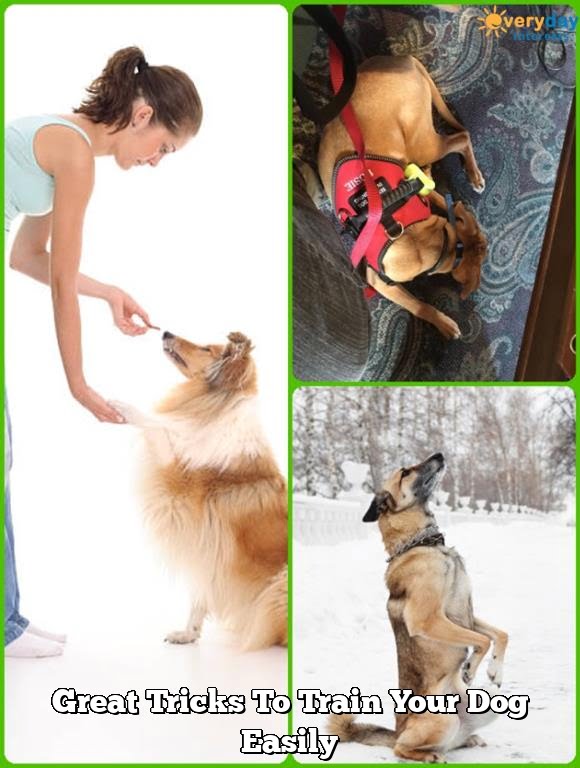Training your dog is an essential aspect of responsible pet ownership. By understanding how to easily train your dog, you can ensure a harmonious relationship with your furry companion based on mutual respect and trust. Training not only improves your dog’s behavior but also strengthens the bond between you and your pet.
Dogs are intelligent animals with their own unique behaviors and instincts. Understanding these behaviors is crucial in effectively training them. By learning how to communicate with your dog in a way that they understand, you can address any behavioral issues and help them learn desirable behaviors.
Setting realistic training goals is key to successfully training your dog. It is important to be patient and consistent in your approach, as well as to have a clear understanding of what behaviors you want to reinforce or modify. With a structured training plan in place, you can create a positive learning environment for your dog and make the training process easier for both of you.
Understanding Your Dog’s Behavior
Dogs are intelligent and social animals, but they also have their own unique instincts and behaviors. Understanding your dog’s behavior is crucial in order to effectively train them. By observing your dog closely and learning about their body language, vocalizations, and responses to different stimuli, you can gain valuable insights into what motivates them and how they communicate. This knowledge will serve as the foundation for successful training methods.
One key aspect of understanding your dog’s behavior is recognizing the reasons behind certain actions or reactions. For example, if your dog tends to bark or become agitated when meeting new people, it could be due to fear or anxiety.
By identifying the underlying cause of these behaviors, you can tailor your training approach to address the root issue rather than simply trying to suppress the symptoms. This not only helps in building a stronger bond with your dog but also sets the stage for long-term behavioral improvement.
In addition to deciphering your dog’s behavior patterns, it is essential to consider their breed characteristics and individual personality traits. Different breeds have specific temperaments and tendencies that may influence how they respond to training methods. For instance, herding breeds like Border Collies may excel in tasks that involve mental stimulation and problem-solving, while scent hounds like Beagles may be easily distracted by their keen sense of smell.
By taking into account these breed-specific traits and adapting your training techniques accordingly, you can maximize success in teaching your dog new commands and behaviors. Ultimately, understanding your dog’s behavior is a key component in knowing how to easily train your dog effectively while fostering a strong bond based on mutual trust and respect.
Setting Realistic Training Goals
When embarking on the journey of training your dog, it is crucial to establish realistic goals that are achievable within a reasonable timeframe. Setting clear and attainable objectives will not only help you track your progress but also prevent frustration for both you and your furry friend. One key aspect of understanding how to easily train your dog is by breaking down complex commands or behaviors into smaller, more manageable tasks that can be mastered gradually.
To set realistic training goals for your dog, consider factors such as their age, breed, and temperament. Each dog is unique and may respond differently to various training methods. Start with simple commands like sit, stay, or paw before moving on to more advanced behaviors. By setting achievable milestones along the way, you can build confidence in both yourself as a trainer and your dog as a learner.
Consistency is key when it comes to establishing realistic training goals for your canine companion. Make sure to practice regularly and reinforce positive behavior consistently. Remember that every dog learns at their own pace, so be patient and celebrate small victories along the way. With dedication and a clear plan in place, you can successfully train your dog while strengthening the bond between you.
| Aspect | Importance |
|---|---|
| Age, breed, temperament | Vital for setting appropriate goals |
| Consistency | Key factor in successful training |
| Celebrating small victories | Motivates both trainer and dog |
Creating a Consistent Training Schedule
Benefits of a Consistent Training Schedule
Consistency is key when it comes to training your dog. Establishing a routine not only helps your furry friend learn faster but also creates a sense of stability and security for them. Dogs thrive on predictability, so having a set schedule for training sessions can help them understand expectations and build trust with their owners.
Setting Up a Training Routine
When creating a training schedule for your dog, consider factors such as timing, frequency, and duration of training sessions. It is important to find the right balance between keeping the training sessions engaging and not overwhelming your pet. Start by incorporating short, frequent sessions into your daily routine and gradually increase the duration as your dog progresses.
Integrating Training Into Daily Activities
One effective way to ensure consistency in training is to integrate it into your daily activities with your dog. For example, you can incorporate obedience commands during walks or meal times. By incorporating training into everyday interactions, you are reinforcing lessons in real-life situations and strengthening the bond between you and your four-legged companion.
By establishing a consistent training schedule, you are not only teaching your dog new skills but also promoting good behavior and strengthening the relationship between you and your pet. Remember that patience and persistence are essential when it comes to training, so stick to the schedule, remain positive, and celebrate every small victory along the way.
Positive Reinforcement Techniques for Training
Positive reinforcement is a powerful training technique that can help you easily train your dog. By rewarding desired behaviors with positive stimuli such as treats, praise, or toys, you can effectively encourage your dog to repeat those behaviors in the future. This method not only strengthens the bond between you and your furry companion but also makes learning fun and enjoyable for them.
Timing and Consistency Are Key
When using positive reinforcement, it is crucial to provide rewards immediately after your dog exhibits the desired behavior. This helps them understand which specific actions they are being rewarded for. Additionally, consistency is key in reinforcing behaviors – make sure to reward your dog every time they perform the desired action to solidify their understanding of what you expect from them.
Varied Rewards for Motivation
It’s important to keep your dog engaged and motivated during training sessions by using a variety of rewards. While treats are often a favorite among dogs, mixing it up with verbal praise, petting, or playtime can keep things interesting for your furry friend. Experiment with different rewards to see what gets your dog excited and eager to learn.
Positive reinforcement techniques can be applied to various training goals, whether you’re teaching basic commands like sit and stay or addressing more complex behaviors like leash pulling or jumping on guests. By incorporating this method into your training routine consistently and patiently, you can effectively teach your dog new behaviors and strengthen your bond in the process.
Addressing Common Behavioral Issues
When it comes to training your dog, one of the key aspects to consider is addressing common behavioral issues that may arise during the training process. By understanding and tackling these issues head-on, you can ensure a smoother and more effective training experience for both you and your furry friend. Here are some common behavioral issues that you may encounter while learning how to easily train your dog:
1. Excessive Barking: If your dog tends to bark excessively, it can be disruptive and frustrating. To address this issue, try teaching them the “quiet” command using positive reinforcement techniques. Reward them when they stop barking on command, and consistently redirect their behavior when they start barking unnecessarily.
2. Jumping on People: Some dogs have a habit of jumping on people as a form of greeting or excitement. To correct this behavior, practice the “off” command by gently pushing them down whenever they jump up. Reward them for keeping all four paws on the ground and provide praise when they greet people calmly.
3. Pulling on the Leash: Walking a dog that constantly pulls on the leash can be challenging and uncomfortable for both parties. Consider using a front-clip harness or head collar to discourage pulling while out on walks. Whenever your dog walks nicely beside you without pulling, reward them with treats or verbal praise.
By actively addressing these common behavioral issues with patience and consistency, you can make great progress in training your dog effectively. Remember that every dog is unique, so it may take time to see improvements in their behavior. Stay committed to the training process and seek professional help if needed to ensure success in teaching your furry companion proper manners and obedience behaviors.
The Importance of Patience and Persistence in Training
Training your dog requires a great deal of patience and persistence. Dogs, like humans, learn at their own pace and may take time to understand and respond to commands. Patience is key when it comes to training as it can take time for your dog to grasp what you are trying to teach them. By being patient, you create a positive learning environment for your furry friend.
To easily train your dog, it is crucial to be consistent with your training methods and expectations. Consistency helps reinforce the lessons you are trying to teach and prevents confusion for your dog. Make sure that everyone in the household is on board with the training techniques and commands being used so that there is no inconsistency in the messages being communicated to your dog.
One effective way to practice patience and persistence in training is by setting small, achievable goals for your dog. Break down tasks into manageable steps and celebrate each small success along the way. This will not only boost your dog’s confidence but also keep you motivated in continuing the training process. Remember, every dog is different, so be patient with their progress and adjust your training strategies accordingly.
Incorporating Play and Bonding Activities Into Training Sessions
One way to incorporate play into training is by utilizing toys or interactive games as rewards for good behavior. For example, you can use a favorite toy as a reward for successfully following a command or completing a task.
This not only motivates your dog to listen and learn but also adds an element of fun to the training process. Incorporating playtime into training sessions can keep your dog engaged and focused, making the learning experience more enjoyable for both of you.
Bonding activities, such as grooming sessions or cuddle time, can also be integrated into your training routine. Spending quality time with your dog outside of formal training sessions helps build trust and strengthens your relationship.
Dogs are more likely to listen to commands from someone they trust and feel connected to, so taking the time to bond with your pet will improve their overall obedience and responsiveness during training. By combining play and bonding activities with regular training exercises, you can create a well-rounded approach to teaching your dog new behaviors and commands effectively.
Tips for Training Different Types of Dogs (Eg Puppies, Older Dogs, Rescue Dogs)
Training different types of dogs requires a tailored approach to effectively help them learn and grow. Puppies, older dogs, and rescue dogs all have unique backgrounds and experiences that can impact their behavior and learning abilities. Here are some tips on how to easily train each type of dog:
When training puppies, it’s important to start early and establish good habits from the beginning. Keep training sessions short and fun to hold their attention, as puppies have shorter attention spans compared to older dogs. Use positive reinforcement techniques such as treats, praise, and playtime to motivate and reward good behavior.
Older dogs may have already developed certain habits or behaviors, so patience is key when training them. Take into account their physical limitations and adjust the training activities accordingly. It’s never too late to teach an old dog new tricks, but consistency and repetition are crucial for success.
Rescue dogs may come with their own set of challenges due to past experiences or trauma. Building trust and establishing a bond with your rescue dog is essential before diving into training. Be patient, understanding, and show them love and compassion as they adjust to their new environment. Seek professional help or guidance if needed to address any specific behavioral issues or concerns.
Overall, no matter the age or background of your dog, the key to successful training lies in understanding their individual needs and tailoring your approach accordingly. Consistent practice, positive reinforcement, patience, and persistence are essential in helping your furry friend learn new skills and behaviors. Remember that every dog is unique, so be flexible in your training methods and always prioritize building a strong bond with your canine companion.
Resources for Further Dog Training Assistance and Support
Training your dog is a rewarding experience that strengthens the bond between you and your furry companion. By understanding your dog’s behavior, setting realistic training goals, and creating a consistent schedule, you can effectively teach your dog new behaviors and commands. Positive reinforcement techniques, such as treats and praise, play a crucial role in shaping your dog’s behavior in a positive way.
However, sometimes you may encounter common behavioral issues that require special attention. Whether it’s potty training for puppies or addressing separation anxiety in older dogs, it’s important to approach these challenges with patience and persistence. Consistency is key in reinforcing good behavior and correcting unwanted habits.
In addition to individualized training tips for different types of dogs, there are various resources available for further assistance and support. Dog training classes, online tutorials, and professional trainers can provide additional guidance on how to easily train your dog.
Remember that every dog is unique and may require different approaches to training, so don’t hesitate to seek help when needed. With dedication and the right tools, you can successfully train your dog to be a well-behaved and happy member of your family.
Frequently Asked Questions
What Is the Easiest Way to Train a Dog?
The easiest way to train a dog is through positive reinforcement. This involves rewarding good behavior with treats, praise, or toys. Consistency and patience are key in training a dog effectively.
What Are the 7 Commands to Train a Dog?
The seven basic commands to train a dog are sit, stay, come, down, heel, no, and leave it. These commands are essential for building a good foundation of obedience in your furry companion.
What Is the Easiest Trick to Teach a Dog?
One of the easiest tricks to teach a dog is “shake hands” or “paw”. This trick involves getting your dog to lift their paw and place it in your hand when commanded. With consistent practice and rewards, most dogs can learn this trick fairly quickly.

Welcome to the blog! I am a professional dog trainer and have been working with dogs for many years. In this blog, I will be discussing various topics related to dog training, including tips, tricks, and advice. I hope you find this information helpful and informative. Thanks for reading!





